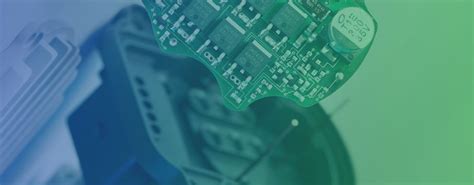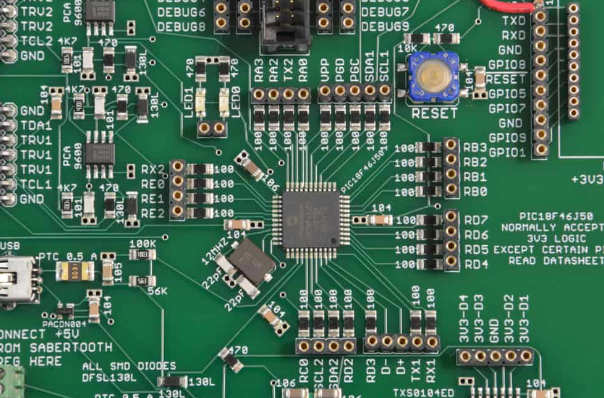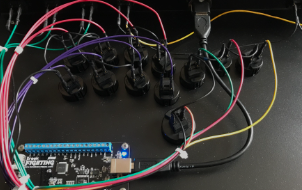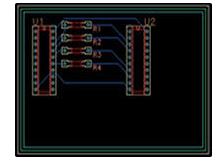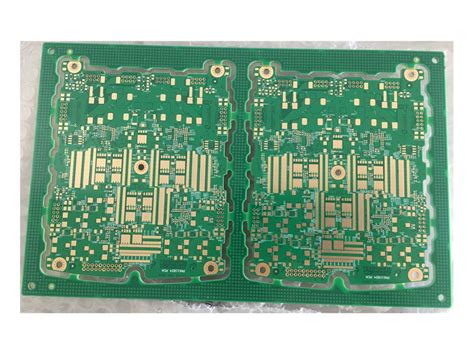Pcb mounting glue
Advantages Of Using PCB Mounting Glue In Electronics Manufacturing
In the realm of electronics manufacturing, the use of PCB mounting glue has emerged as a pivotal advancement, offering numerous advantages that enhance both the efficiency and reliability of electronic devices. As the demand for more compact and sophisticated electronic products continues to rise, manufacturers are increasingly turning to innovative solutions like PCB mounting glue to meet these evolving needs. This adhesive technology plays a crucial role in securing components to printed circuit boards (PCBs), thereby ensuring the structural integrity and performance of electronic assemblies.
One of the primary advantages of using PCB mounting glue is its ability to provide robust mechanical support.
Unlike traditional soldering methods, which may be susceptible to mechanical stress and thermal cycling, PCB mounting glue offers a more resilient bond. This is particularly beneficial in applications where electronic devices are exposed to harsh environmental conditions or frequent mechanical vibrations. By effectively absorbing and distributing stress, the glue helps prevent component detachment and potential circuit failures, thereby extending the lifespan of the device.
Moreover, PCB mounting glue contributes significantly to the miniaturization of electronic devices.
As consumer electronics become increasingly compact, the need for space-saving solutions becomes paramount. PCB mounting glue allows for the secure attachment of components without the need for additional hardware, such as screws or brackets, which can occupy valuable space on the circuit board. This not only facilitates the design of smaller and lighter devices but also enhances their aesthetic appeal by eliminating bulky fastening elements.
In addition to its mechanical benefits, PCB mounting glue also offers thermal management advantages.
Electronic components generate heat during operation, which can adversely affect their performance and reliability if not properly managed. PCB mounting glue can be formulated with thermal conductive properties, enabling it to efficiently dissipate heat away from critical components. This helps maintain optimal operating temperatures, reducing the risk of overheating and improving the overall performance of the device.
Furthermore, the use of PCB mounting glue can lead to cost savings in the manufacturing process.
By eliminating the need for additional mechanical fasteners and reducing the complexity of assembly, manufacturers can streamline production and reduce labor costs. Additionally, the enhanced reliability and durability provided by the glue can result in fewer warranty claims and product returns, further contributing to cost efficiency.
Another noteworthy advantage of PCB mounting glue is its versatility.
It can be used with a wide range of materials and component types, making it suitable for various applications across different industries. Whether in consumer electronics, automotive systems, or industrial equipment, PCB mounting glue can be tailored to meet specific requirements, providing manufacturers with a flexible solution that can be adapted to diverse production needs.
In conclusion, the adoption of PCB mounting glue in electronics manufacturing offers a multitude of benefits that enhance the performance, reliability, and cost-effectiveness of electronic devices. By providing robust mechanical support, enabling miniaturization, improving thermal management, and offering versatility, this adhesive technology has become an indispensable tool for manufacturers striving to meet the demands of modern electronics. As the industry continues to evolve, the role of PCB mounting glue is likely to expand, further solidifying its importance in the production of cutting-edge electronic products.
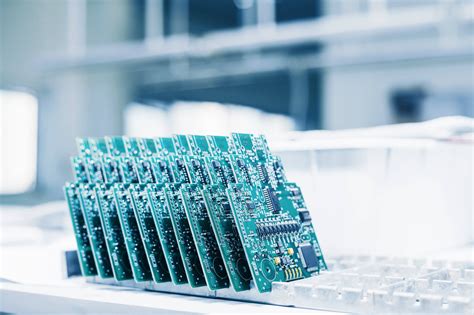
How To Choose The Right PCB Mounting Glue For Your Project
When embarking on a project that involves printed circuit boards (PCBs), selecting the appropriate mounting glue is a critical decision that can significantly impact the performance and longevity of your electronic assembly. The choice of PCB mounting glue is not merely a matter of preference but rather a decision that should be informed by a variety of factors, including the specific requirements of your project, the environmental conditions the assembly will face, and the materials involved. Understanding these factors will guide you in making an informed choice that ensures both functionality and durability.
To begin with, it is essential to consider the thermal properties of the mounting glue.
PCBs often operate in environments where they are exposed to varying temperatures, and the glue must be able to withstand these changes without losing its adhesive properties. Therefore, selecting a glue with a high thermal resistance is crucial, especially for applications involving high-power components that generate significant heat. Additionally, the glue should have a low thermal expansion coefficient to prevent stress on the PCB and its components during temperature fluctuations.
Another important consideration is the electrical properties of the glue.
Since PCBs are integral to electronic circuits, the mounting glue must be non-conductive to prevent any unintended electrical pathways that could lead to short circuits or other malfunctions. It is advisable to choose a glue with high dielectric strength to ensure it acts as an effective insulator. Furthermore, the glue should not interfere with the signal integrity of the PCB, which is particularly important in high-frequency applications.
The mechanical properties of the glue also play a vital role in its selection.
The glue must provide sufficient mechanical support to the components mounted on the PCB, ensuring they remain securely in place throughout the product’s lifecycle. This is particularly important in applications subject to vibrations or mechanical shocks, where a strong adhesive bond is necessary to prevent component detachment. Additionally, the glue should exhibit good adhesion to the materials used in the PCB and its components, such as metals, ceramics, and plastics.
Environmental factors are another critical aspect to consider when choosing PCB mounting glue.
The glue must be resistant to environmental conditions such as humidity, chemicals, and UV exposure, which can degrade its adhesive properties over time. For projects that will be exposed to harsh environments, selecting a glue with robust environmental resistance is essential to maintain the integrity of the assembly.
Moreover, ease of application is a practical consideration that should not be overlooked.
The glue should be easy to apply and cure within a reasonable timeframe to facilitate efficient assembly processes. Some glues require specific curing conditions, such as heat or UV light, which should be compatible with your production capabilities.
In conclusion, selecting the right PCB mounting glue involves a careful evaluation of various factors, including thermal and electrical properties, mechanical strength, environmental resistance, and ease of application. By considering these aspects, you can ensure that the glue you choose will provide a reliable and durable bond, contributing to the overall success of your project. Making an informed decision in this regard is not only a matter of technical necessity but also a step towards achieving optimal performance and longevity for your electronic assemblies.

Step-By-Step Guide To Applying PCB Mounting Glue Effectively
Applying PCB mounting glue effectively is a crucial step in ensuring the stability and functionality of printed circuit boards (PCBs) in various electronic devices. This process, while seemingly straightforward, requires precision and attention to detail to achieve optimal results. To begin with, it is essential to understand the purpose of PCB mounting glue. This adhesive is used to secure components onto the PCB, providing mechanical support and reducing the risk of damage due to vibrations or physical stress. Moreover, it can also offer thermal management benefits by dissipating heat away from sensitive components.
Before applying the glue, it is imperative to prepare the PCB surface properly.
This involves cleaning the board to remove any dust, grease, or other contaminants that could interfere with the adhesive’s bonding capabilities. A clean, dry cloth or a specialized cleaning solution can be used for this purpose. Once the surface is adequately prepared, the next step is to select the appropriate type of glue. There are various adhesives available, each with specific properties suited for different applications. For instance, epoxy-based glues are known for their strong bonding capabilities and resistance to environmental factors, making them ideal for high-stress applications.
With the glue selected, the application process can commence.
It is advisable to use a dispensing tool, such as a syringe or a precision applicator, to ensure accurate placement and control over the amount of glue applied. This is particularly important in preventing excess adhesive from spreading to unwanted areas, which could potentially cause short circuits or interfere with the board’s functionality. As the glue is applied, it is crucial to maintain a steady hand and apply consistent pressure to achieve an even distribution.
After applying the glue, the components should be carefully positioned onto the PCB.
It is important to ensure that each component is aligned correctly and seated firmly in place. This step may require the use of tweezers or other precision tools, especially when dealing with small or delicate components. Once all components are in place, it is necessary to allow the glue to cure. The curing time can vary depending on the type of adhesive used and the environmental conditions. It is essential to follow the manufacturer’s instructions regarding curing times and conditions to ensure a strong bond.
During the curing process, it is advisable to avoid any movement or disturbance of the PCB to prevent misalignment or weakening of the adhesive bond.
Once the glue has fully cured, a thorough inspection should be conducted to verify that all components are securely mounted and that there are no visible defects or excess adhesive. This inspection is a critical step in ensuring the long-term reliability and performance of the PCB.
In conclusion, applying PCB mounting glue effectively requires careful preparation, precise application, and adherence to curing guidelines. By following these steps, one can ensure that the PCB components are securely mounted, thereby enhancing the overall durability and functionality of the electronic device. This meticulous approach not only contributes to the immediate success of the assembly process but also plays a vital role in the long-term performance and reliability of the final product.

Comparing PCB Mounting Glue With Other Mounting Techniques
In the realm of electronics manufacturing, the choice of mounting techniques for printed circuit boards (PCBs) is a critical decision that can significantly impact the performance, reliability, and cost-effectiveness of the final product. Among the various methods available, PCB mounting glue has emerged as a popular option, offering distinct advantages over traditional techniques such as soldering, mechanical fastening, and surface-mount technology (SMT). To understand the merits of PCB mounting glue, it is essential to compare it with these other methods, considering factors such as ease of application, durability, and adaptability to different environments.
PCB mounting glue, often referred to as adhesive bonding, provides a versatile solution for securing components to a PCB.
One of its primary advantages is the ability to distribute stress evenly across the bonded area, reducing the risk of mechanical failure. This characteristic is particularly beneficial in applications where the PCB is subject to vibration or thermal cycling, as the adhesive can absorb and dissipate these stresses more effectively than rigid mechanical fasteners. In contrast, soldering, while providing excellent electrical connectivity, can create localized stress points that may lead to component failure over time.
Moreover, the application process for PCB mounting glue is relatively straightforward and can be automated, making it suitable for high-volume production environments.
This contrasts with mechanical fastening, which often requires precise alignment and manual intervention, potentially increasing labor costs and production time. Additionally, adhesives can be applied in a controlled manner to accommodate components of various shapes and sizes, offering greater design flexibility compared to the constraints imposed by traditional soldering or mechanical methods.
Another significant advantage of using PCB mounting glue is its ability to provide a hermetic seal around components,
protecting them from environmental factors such as moisture, dust, and chemical exposure. This feature is particularly valuable in harsh operating conditions, where maintaining the integrity of the electronic assembly is paramount. While conformal coatings can be applied to soldered assemblies to achieve similar protection, the adhesive itself inherently offers this benefit, simplifying the manufacturing process.
However, it is important to acknowledge that PCB mounting glue is not without its limitations.
For instance, the curing time required for adhesives can be a drawback in fast-paced production settings, where throughput is a priority. In contrast, soldering provides an immediate bond upon cooling, allowing for quicker assembly times. Additionally, while adhesives offer excellent mechanical support, they may not provide the same level of electrical conductivity as solder, necessitating the use of conductive adhesives or supplementary soldering for certain applications.
Furthermore, the choice of adhesive must be carefully considered to ensure compatibility with the materials used in the PCB and its components.
Factors such as thermal expansion coefficients, chemical resistance, and long-term stability must be evaluated to prevent potential issues such as delamination or degradation over time. In comparison, soldering and mechanical fastening are generally more forgiving in terms of material compatibility, provided that appropriate materials are selected.
In conclusion, while PCB mounting glue offers several advantages over traditional mounting techniques, including stress distribution, environmental protection, and design flexibility, it also presents challenges that must be addressed to ensure optimal performance. By carefully weighing these factors, manufacturers can make informed decisions that align with their specific requirements and production goals, ultimately enhancing the reliability and functionality of their electronic products.

